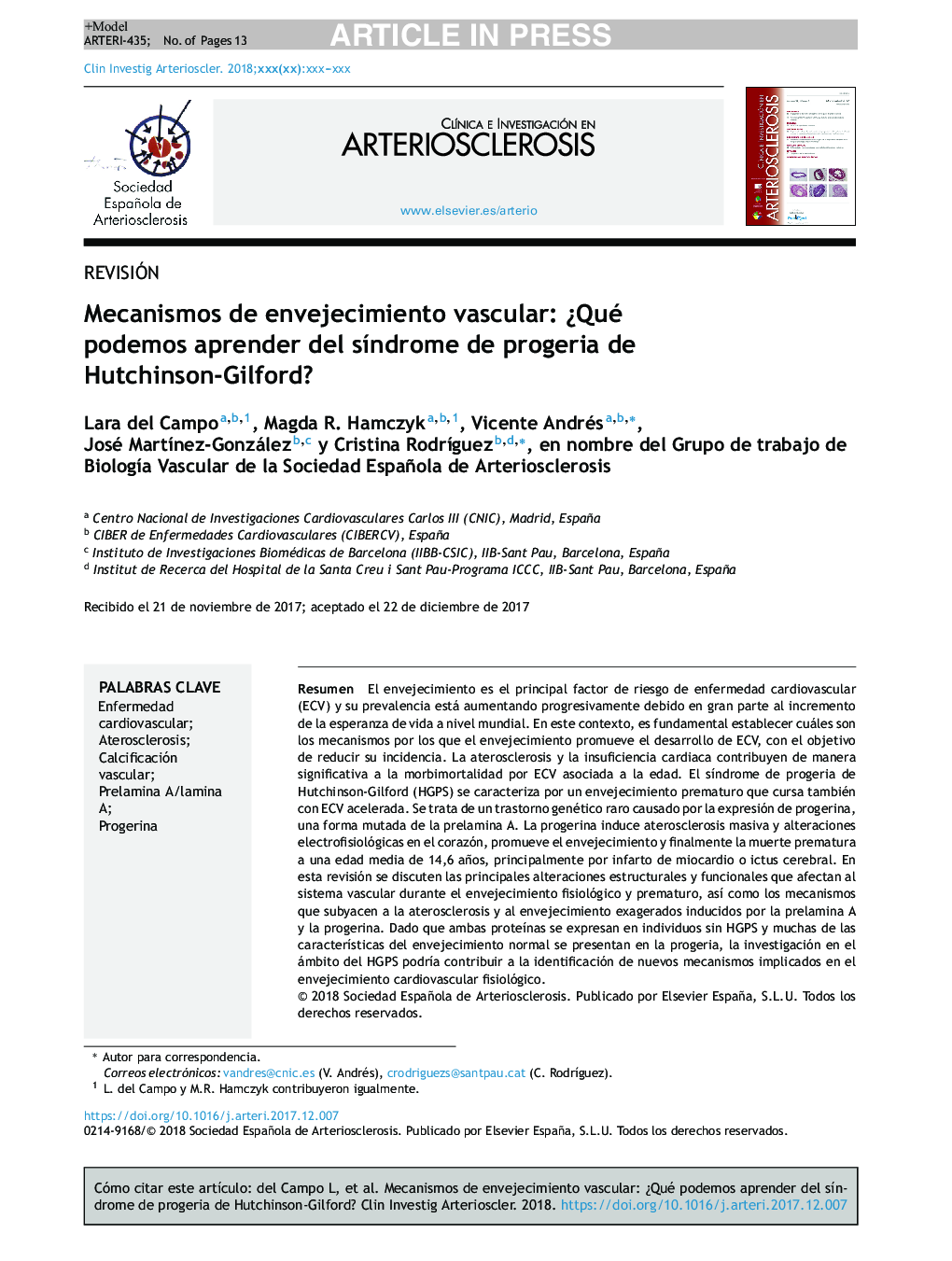| کد مقاله | کد نشریه | سال انتشار | مقاله انگلیسی | نسخه تمام متن |
|---|---|---|---|---|
| 8649674 | 1570948 | 2018 | 13 صفحه PDF | دانلود رایگان |
عنوان انگلیسی مقاله ISI
Mecanismos de envejecimiento vascular: ¿Qué podemos aprender del sÃndrome de progeria de Hutchinson-Gilford?
دانلود مقاله + سفارش ترجمه
دانلود مقاله ISI انگلیسی
رایگان برای ایرانیان
کلمات کلیدی
موضوعات مرتبط
علوم زیستی و بیوفناوری
بیوشیمی، ژنتیک و زیست شناسی مولکولی
فیزیولوژی
پیش نمایش صفحه اول مقاله

چکیده انگلیسی
Aging is the main risk factor for cardiovascular disease (CVD). The increased prevalence of CVD is partly due to the global increase in life expectancy. In this context, it is essential to identify the mechanisms by which aging induces CVD, with the ultimate aim of reducing its incidence. Both atherosclerosis and heart failure significantly contribute to age-associated CVD morbidity and mortality. Hutchinson-Gilford progeria syndrome (HGPS) is a rare genetic disorder caused by the synthesis of progerin, which is noted for accelerated aging and CVD. This mutant form of prelamin A induces generalised atherosclerosis, vascular calcification, and cardiac electrophysiological abnormalities, leading to premature aging and death, mainly due to myocardial infarction and stroke. This review discusses the main vascular structural and functional abnormalities during physiological and premature aging, as well as the mechanisms involved in the exacerbated CVD and accelerated aging induced by the accumulation of progerin and prelamin A. Both proteins are expressed in non-HGPS individuals, and physiological aging shares many features of progeria. Research into HGPS could therefore shed light on novel mechanisms involved in the physiological aging of the cardiovascular system.
ناشر
Database: Elsevier - ScienceDirect (ساینس دایرکت)
Journal: ClÃnica e Investigación en Arteriosclerosis - Volume 30, Issue 3, MayâJune 2018, Pages 120-132
Journal: ClÃnica e Investigación en Arteriosclerosis - Volume 30, Issue 3, MayâJune 2018, Pages 120-132
نویسندگان
Lara del Campo, Magda R. Hamczyk, Vicente Andrés, José MartÃnez-González, Cristina RodrÃguez,